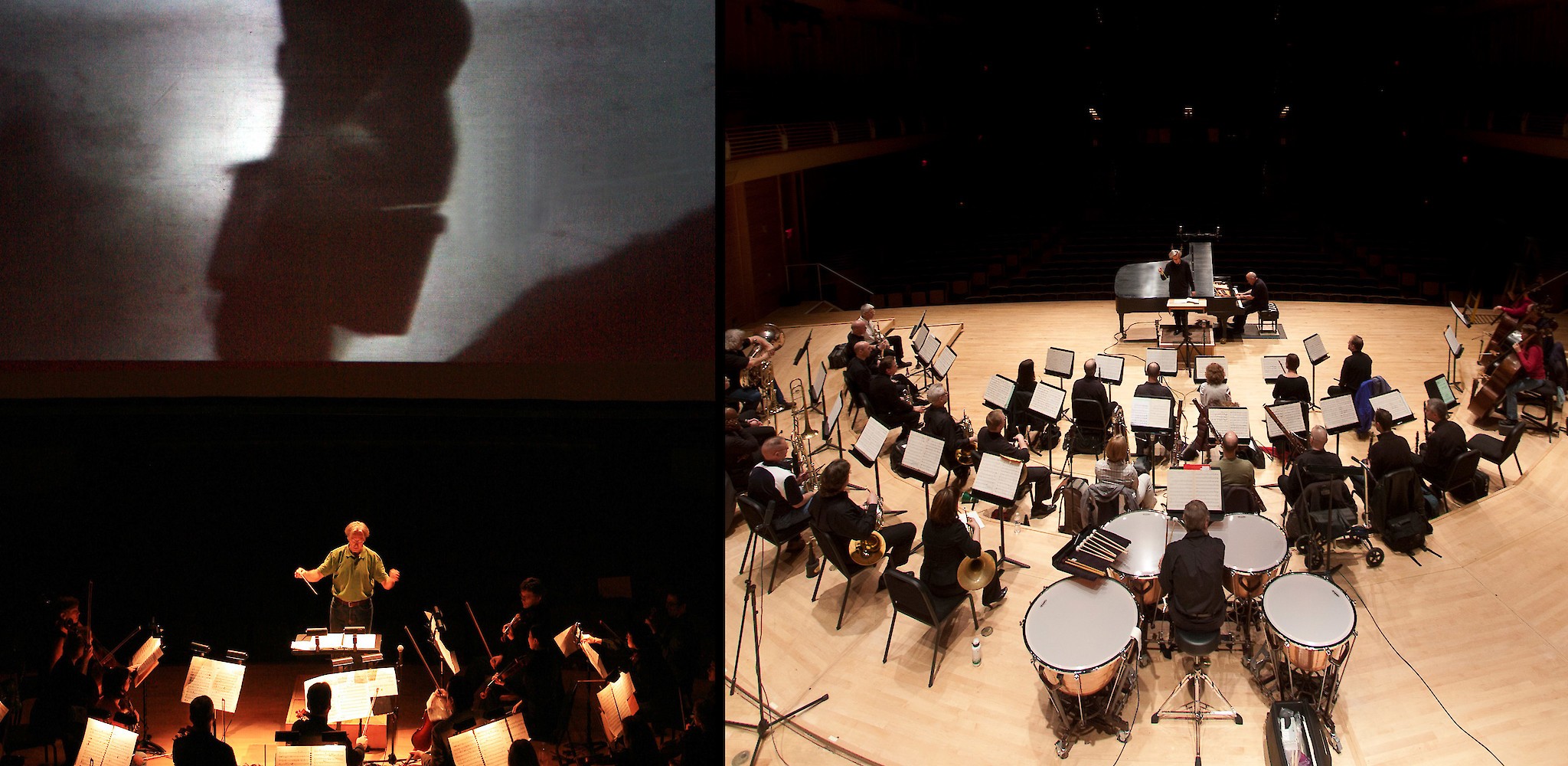Review: The City by Lewis Mumford; Ralph Steiner and Willard von Dyke; Aaron Copland
Note: Since this disc review is no longer available online, we are reprinting it here.
In 2005, Naxos released a highly praised DVD of two classic Pare Lorentz documentaries, The River (1936) and The Plow that Broke the Plains (1937), with new recordings of their legendary Virgil Thomson scores. The creative forces responsible for this venture—Joseph Horowitz, Angel Gil-Ordóñez, and the Post-Classical Ensemble—have now turned their attention to Aaron Copland’s music for the 1939 film The City. Once again they have transformed the viewer’s experience of an aged film by replacing the monaural soundtrack with new narration and a high-quality stereo recording of the music.
There are numerous excellent justifications for such an undertaking. First, there is no modern recording of this important Copland score. Joseph Horowitz, who is one of the United States’ leading cultural historians, describes the score in his liner notes as “arguably, Copland’s highest achievement as a film composer, but far from his best-known.” The City marked Copland’s first foray into film music, giving him, as he wrote in his autobiography, “the credit I needed to approach Hollywood again.”1 Meanwhile the film itself, which examines the social implications of town planning, is widely considered one of the finest early documentaries: it “tells its story without wasting a shot,” as Time magazine put it back in 1939.2
Beyond its attraction for Copland scholars and documentary specialists, this DVD offers an array of possibilities for classes on film music and American music history. For example, it would provide an excellent starting point for discussions of Depression-era politics and their impact on the arts. Produced for the 1939 New York World’s Fair, The City brought together a team of leading left-wing artists and thinkers from New York: cinematographers Ralph Steiner and Willard Van Dyke; city planner Lewis Mumford, who wrote the script; Henwar Rodakiewicz, who created the scenario; actor Morris Carnovsky, who was the narrator; and, of course, Aaron Copland. Howard Pollack describes the film, which offers a vision for a better model for living and working in the United States, as an embodiment of the progressive socialist ideals and attitudes that these men shared.3 The City juxtaposes the countryside, a place rich in quality of life but poor in opportunity, with the urban center, its opposite. Mumford’s script proposes the union of the strengths of each lifestyle in new planned communities, which would offer a higher standard of living for American workers. In this context, Copland’s pared down and approachable score for The City serves as the musical expression of this quest for a more humane society, typical of his efforts to attract a broader public during the 1930s.
The three-part structure of the film—countryside, city, new planned city—meanwhile offers an excellent mechanism to compare and contrast Copland’s rural and urban musical tropes and thereby explore the nature of his musical Americanism. These tropes can be found across Copland’s output during this period but their straightforward juxtaposition here will aid in-class presentation. The alternately disturbing and humorous features of city life are especially elegantly depicted in this score.
The newly recorded soundtrack is largely excellent, with the Post-Classical Ensemble exemplifying the understated, light, and precise style of playing needed for Copland’s music. The striking saxophone solos are particularly evocative and compare very favorably to their counterparts on the original recording. (Such comparisons are easily made, since the DVD also includes the entire film with the original soundtrack as a bonus feature.)
A striking element of the new soundtrack—in marked contrast to the original—is the reduced volume of the narration in relation to the music. In his liner notes to the DVD, Horowitz explains that this approach is modeled on Virgil Thomson’s film music philosophy, which asserts that narration should be no louder than is required for it to be understood. The result is that the music of The City is much more noticeable than is conventional, thus going against common practice in Hollywood. Overall this approach poses few problems in The City because narration and music mostly alternate. In the brief moments where they overlap, however, it can be a little more difficult to understand Francis Guinan’s fine new narration. Nevertheless, the decision seems entirely justified given that Copland’s music serves such a crucial role in expressing the message of this dialogue- and sound effects–free film.
The DVD comes with three fascinating bonus features that offer additional teaching-related opportunities: The entire film with the original soundtrack (mentioned above); a documentary about the town of Greenbelt, Maryland, where the final section of the film was shot; and a conversation between Joseph Horowitz and George Stoney, a documentary filmmaker and a historian of the genre. Stoney’s conversation with Horowitz will be useful for students of both film and music history. Particularly interesting is Stoney’s discussion of the role of music in the early documentary. In The City, he says, music serves both to emphasize the film’s political message and to provide relief from its weightiness. Elsewhere Horowitz assesses the influence of Thomson’s film music on Copland and describes the nature of their combined contribution to the genre. Together, he says, they crafted uniquely “American” soundtracks that differed markedly from the European-influenced Hollywood model, creating a leaner style with “fewer notes” that others would soon emulate.

